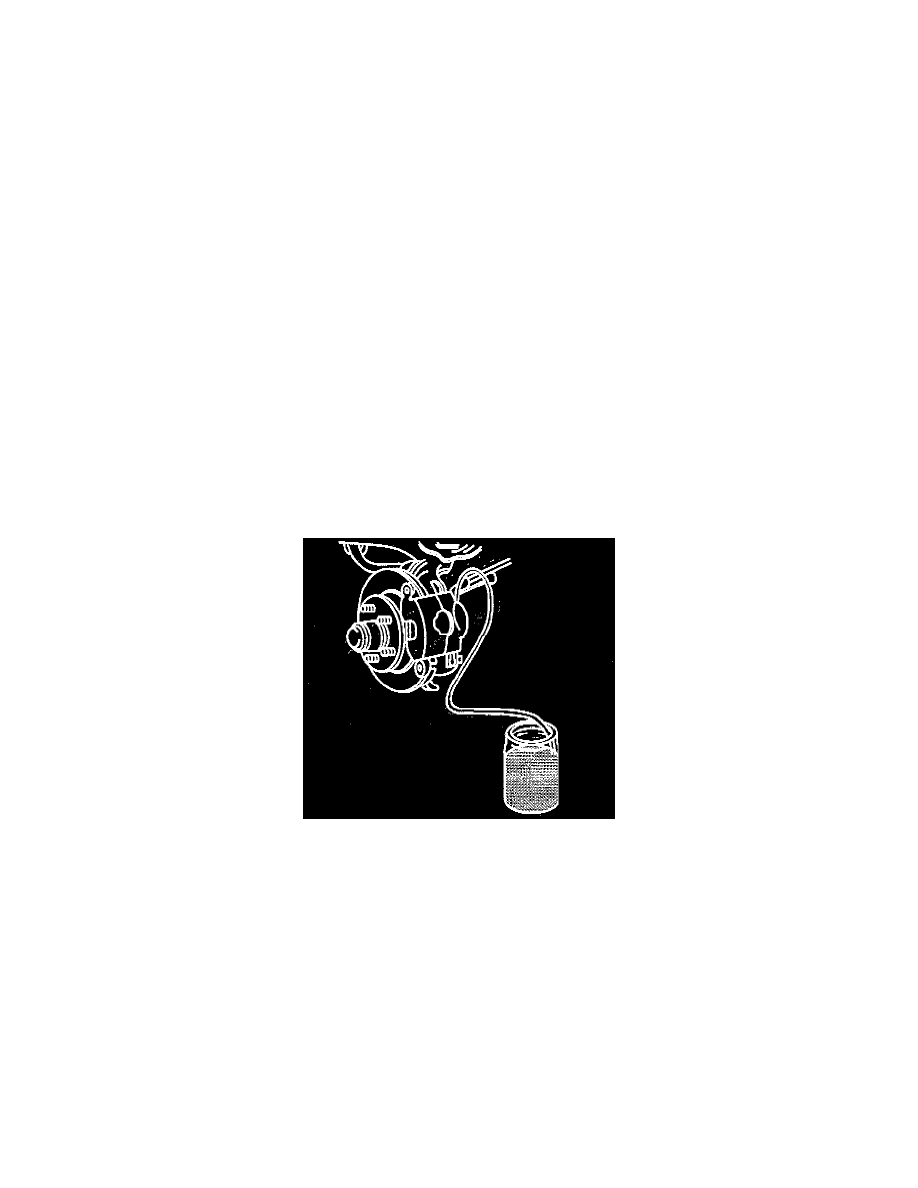G 1500 1/2 Ton Van V6-4.3L VIN W (1997)

Brake Bleeding: Service and Repair
Manual Bleeding
CAUTION: Brake fluid will damage electrical connectors and painted surfaces. Use shop cloths, suitable containers, and fender covers to prevent brake
fluid from contacting these areas. Always reseal and wipe off brake fluid containers to prevent spills.
NOTE: Bleeding is necessary if air has entered the hydraulic brake system. It may be necessary to bleed the system at all four wheels if a low fluid level
in the brake master cylinder caused the air to enter into the system or if the brake pipes have been disconnected at the brake master cylinder. If a pipe is
disconnected at one wheel, then bleed only that wheel.
1. Relieve the vacuum or hydraulic reserve by applying the brakes several times with the ignition switch in the "OFF" position.
2. Fill the brake master cylinder reservoirs with Delco Supreme No. 11 Hydraulic Brake Fluid GM P/N 1052535 or an equivalent DOT 3 brake fluid.
^
Maintain the fluid level in the reservoir during bleeding.
3. If the brake master cylinder is replaced or suspected to have air in the bore, bleed it before the rear brake cylinders or front brake calipers.
a. Disconnect the forward brake pipe connection at the master cylinder.
b. Allow the brake fluid to flow from the connector port.
c. Connect, but do not tighten the brake pipe.
d. Slowly apply the brake pedal and allow the air to bleed from the loose fitting.
e. Tighten the fitting before releasing the pedal.
f.
Wait 15 seconds.
G. Repeat this sequence, including the 15-second wait, until all air is purged from the bore.
h. After all the air has been removed from the forward connection, repeat this procedure for the rear pipe.
4. If the Electronic Brake Control Module (EBCM) is replaced or suspected to have air trapped inside, it must be bled next.
5. Bleed each wheel in the following sequence:
a. The right rear.
b. The left rear.
c. The right front.
d. The left front.
6. Attach a clear hose to the rear brake cylinder or the front brake caliper bleeder screw.
7. Immerse the opposite end of the hose into a clean container partially filled with clean brake fluid.
8. Slowly apply the brake pedal one time and hold.
9. Loosen the bleeder screw to purge the rear brake cylinder or the front brake caliper.
10. Tighten the bleeder screw and slowly release the pedal.
11. Wait 15 seconds.
12. Repeat this sequence, including the 15-second wait, until all air is purged from the rear brake cylinder or the front brake caliper.
13. Continue Steps 6 through 12 at each wheel until the entire brake system has been bled.
14. Check the brake pedal for "sponginess" and the brake warning lamp for an indication of unbalanced pressure. Check brake pedal travel using J
28662.
15. Repeat the bleeding procedure to correct either of these conditions.
